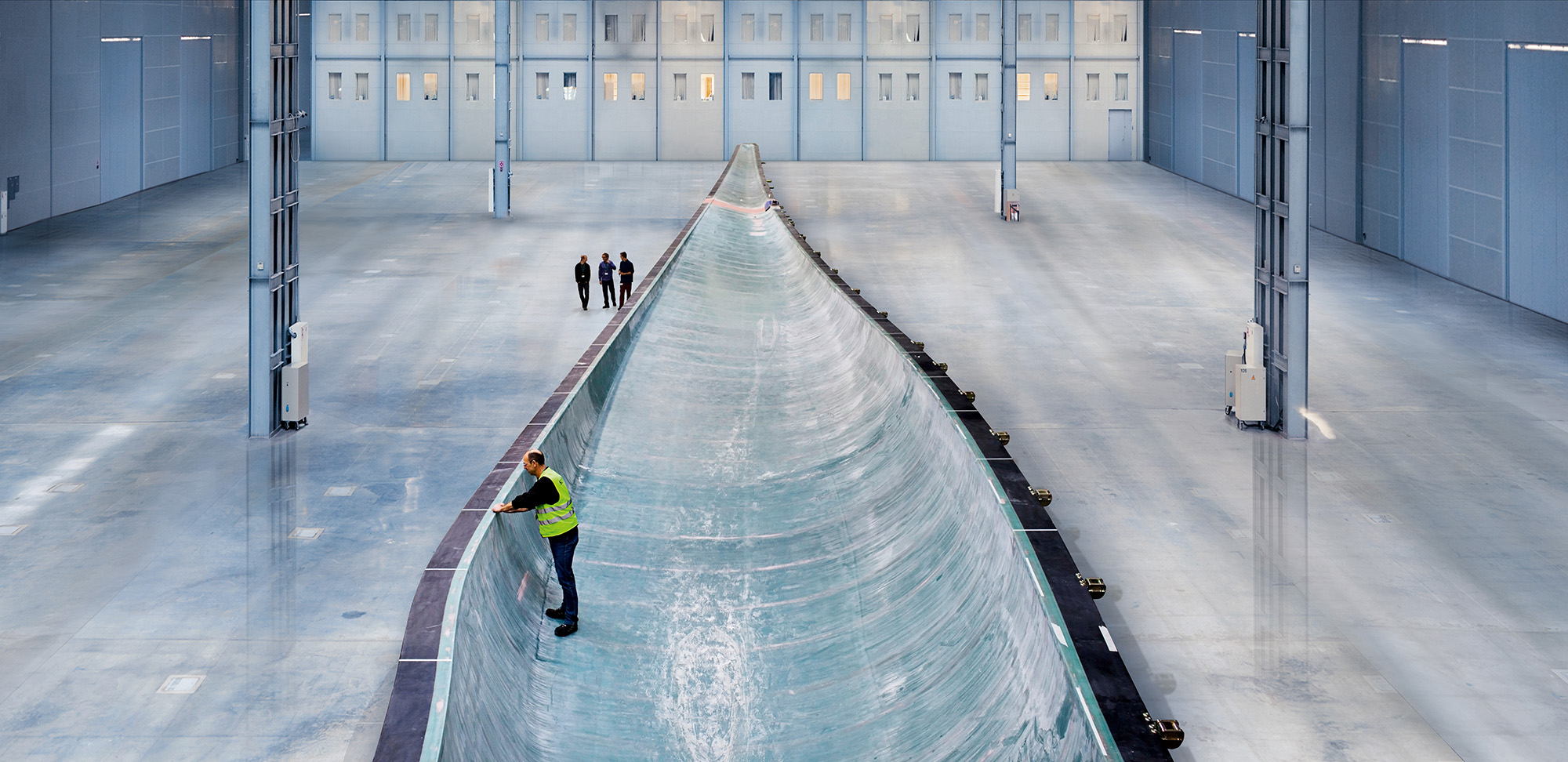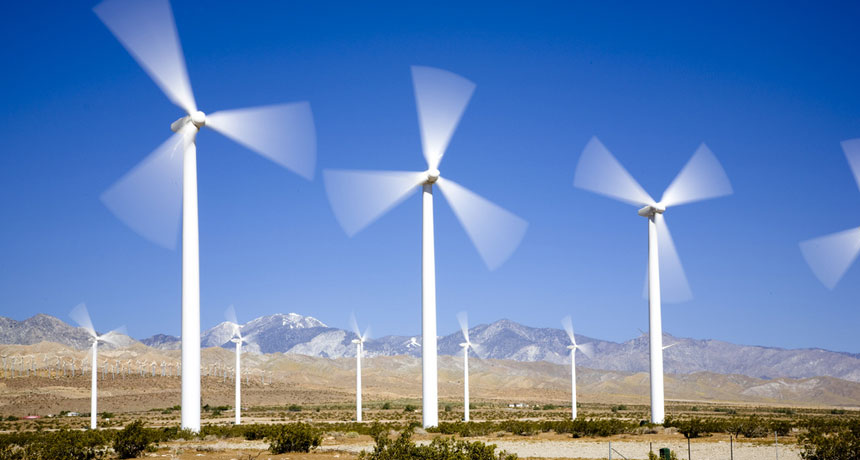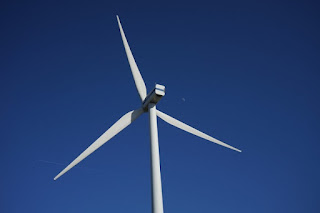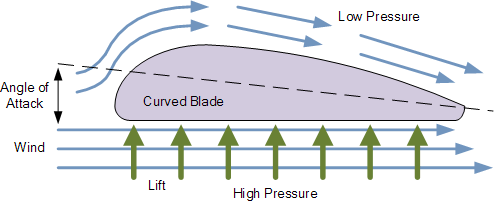
The wind is a free energy source until governments charge it, but it is also a very unpredictable and unreliable source of energy because its intensity and direction fluctuate all the time. So, to get the most out of the available wind energy, the wind turbine blade design must be of high performance.
Wind turbines must be enormous and tall to create reasonable amounts of electricity. Still, to function efficiently, they must also be carefully built and manufactured, making them pricey. Most wind turbines built for energy generation have consisted of a two or three-bladed propeller moving around a horizontal axis. These propeller-like wind turbine blade designs transform wind energy into useful shaft power known as torque.

This is accomplished by capturing energy from the wind by slowing or decelerating it as it passes over the blades. The forces that cause the wind to decelerate are equal and opposite to the thrust-type lifting forces that cause the blades to revolve.
Wind turbine blades, like airplane wings, generate lift owing to their curved design. Low air pressure is generated on the side with the largest curvature, while high-pressure air beneath pushes on the opposite side of the blade-shaped aero foil. As a result, a lifting force perpendicular to an airflow direction across the turbine’s blade. The difficulty here is to build the rotor blade in such a manner that it produces the proper amount of rotor blade lift and thrust, resulting in optimal air deceleration and hence higher blade efficiency.

If the turbine’s propeller blades move too slowly, too much wind passes by undisturbed, and the turbine does not collect as much energy as it might. If, on the other hand, the propeller blade revolves too quickly, it appears to the wind as a massive flat spinning disc, generating enormous drag.
TSR is defined as the ratio of rotor tip speed to wind speed and is determined by the rotor blade form profile, the quantity of turbine blades, and the wind turbine propeller blade design itself. So, what is the ideal form and design for a wind turbine blade?
Wind turbine blades are often designed to generate the most electricity from the wind while requiring the least amount of construction. However, wind turbine blade makers are constantly striving to create a more efficient blade design. Constant advancements in wind blade design have resulted in new wind turbine designs that are more compact, quieter, and capable of generating more electricity from less wind. It is thought that by slightly bending the turbine blade, they may catch 5 to 10% more wind energy and function more efficiently in locations with lower wind speeds.
Design of Wind Turbine Blades
So, which of the following blade shapes would create the most energy for a wind turbine – Flat blades are the oldest blade form and have been used on windmills for thousands of years; however, this flat, broad form is becoming less prevalent as other forms of blade design become more popular. The flat blades push against the wind while the wind pushes back.

Because the blades that rotate back on the upstroke after generating power oppose the power production, the resulting rotation is exceedingly sluggish. This is due to the blades behaving like large paddles going in the opposite direction, pushing against the wind, hence earning the moniker drag-based rotor blades.
However, compared to other wind blade designs, flat blade designs provide substantial benefits to the do-it-yourselfer. Flat rotor blades are inexpensive and straightforward to cut from sheets of plywood or metal, assuring consistent form and size. They are also the most simple to comprehend, needing less design and construction abilities, but their efficiency and simplicity of electrical power generation are relatively low.
Curved blades are akin to a long aviation wing with a curved surface on top (also known as an aerofoil). Air flows around the curved blade, with the air moving faster over the curved top of the blade than underneath the flat side of the blade, generating a lower pressure zone on top and, as a result, subjecting it to aerodynamic lifting forces that create movement.
These lifting forces are always perpendicular to the upper surface of the curved blade, causing the blade to rotate around the central hub. The quicker the wind blows, the more lift is created on the blade, causing it to rotate quicker. The advantages of a curved rotor blade over a flat blade include that lift forces allow a wind turbine’s blade tips to move faster than the wind, creating more power and greater efficiency. As a result, lift-based wind turbine blades are becoming widespread. Furthermore, homemade PVC wind turbine blades may be cut from standard-sized drainage pipes that already have the curved form built-in, giving them the ideal blade form.
Air Flow and Performance of Curved Blades

On the other hand, curved blades suffer from drag along their length, stopping the blade’s motion. Drag is primarily the friction of air against the surface of the blade. Drag is perpendicular to Lift and flows in the same direction as the air along the blade surface. However, we can minimize drag by bending or twisting the blade and tapering it throughout its length, resulting in the most efficient wind turbine blade design.
The “angle of attack” is the angle formed by the direction of the oncoming wind and the blade’s pitch with regard to the oncoming wind. More lift is generated as the angle of attack increases, but as the angle increases above 20 degrees, the blade reduces lift. So there is an optimal rotor blade pitch angle that produces the optimal rotation, and current wind turbine rotor blades are built with a twist throughout their length from a steep pitch at their root to a relatively shallow pitch at their tip.
Because the speed of a rotating blade at its tip is faster than at its root or center, modern rotor blades are twisted along their length by 10-to-20o from root to tip, reducing the angle of attack from where the air is moving relatively slowly near the root to where it is moving much faster at the tip. This blade twist increases the angle of attack along the length of the blade, resulting in the best lift and rotation.
In conclusion, a wind turbine’s rotor blade length dictates how much wind power can be collected as it rotates around a central hub. The aerodynamic performance of wind turbine blades varies greatly between flat and curved blades. Flat blades are inexpensive and simple to manufacture, but they have large drag forces, making them sluggish and inefficient.
The rotor blades of wind turbines must have an aerodynamic profile to produce lift and rotate the turbine; however, curved aerofoil type blades are more complex to build yet give superior performance and greater rotational speeds, making them suitable for electrical energy generation.
However, we may increase the aerodynamics and efficiency of wind turbine blades even more by adopting twisted, tapered propeller-type rotor blades. Twisting the blade alters the wind’s angle along its length. The combined effect of bending and tapering the blade throughout its length increases the angle of attack, boosting speed and efficiency while decreasing drag. In addition, because the bending force is minimized, tapered blades are stronger and lighter than straight blades.
Wind turbine blade design is critical for making a wind turbine perform as expected. Wind turbine blade innovations and new technologies have not ended here, as new formulae and designs are being studied regularly to increase their performance, efficiency, and power production.
To discover more about “Wind Turbine Blades” and how they function as part of a wind power system, click here to get your Wind Electricity For Dummies book from Amazon now and
No comments:
Post a Comment